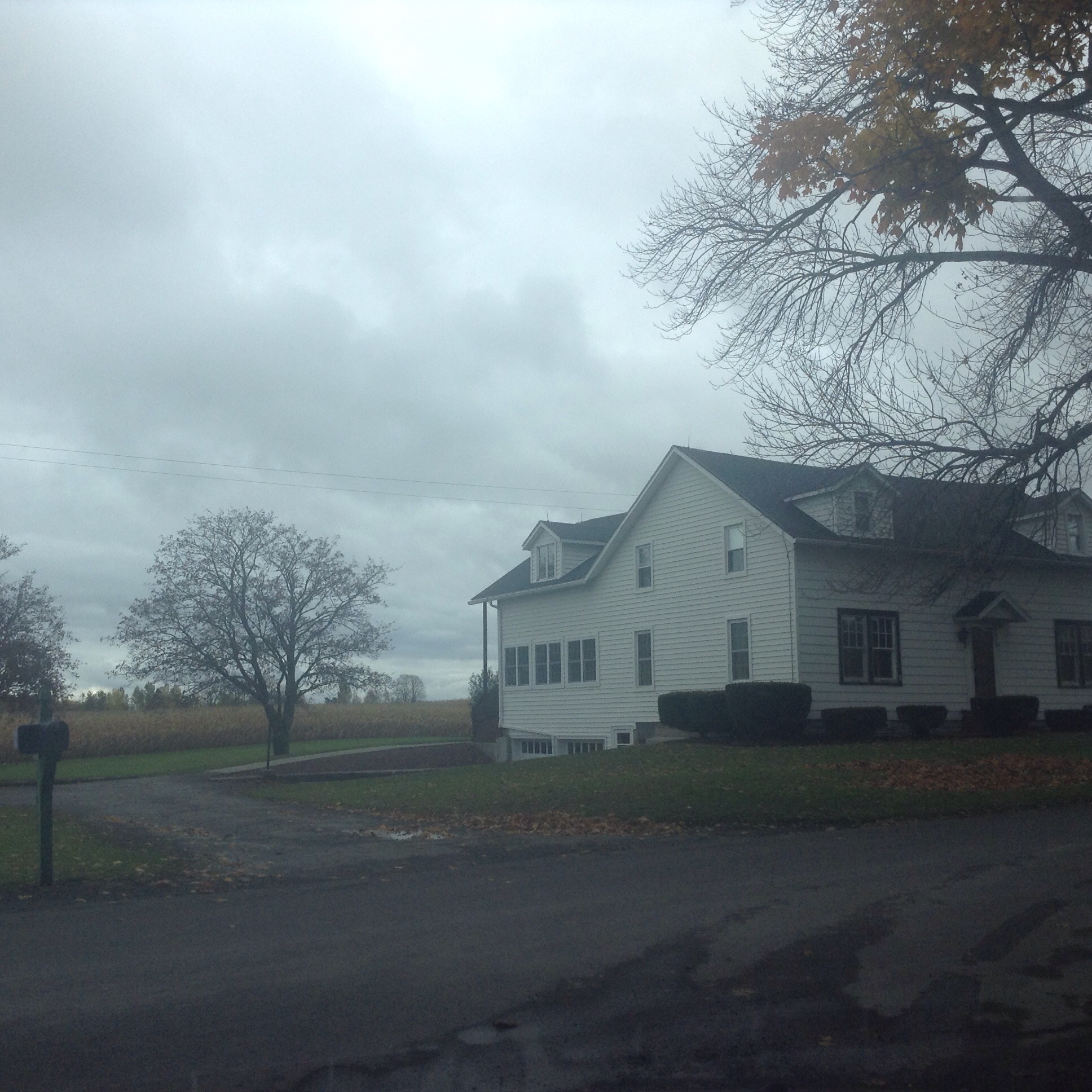Why Saying GMOs Are Safe isn’t Helping
by Joni Kamiya, Hawaii Farmers Daughter, November 21, 2015
Last weekend, I finally had some free time in my fellowship to take my mom and kids sightseeing around Ithaca. I decided to take them to the Cayuga Nature Center.
The nature center is a small museum of sorts but mainly an outdoor series of trails that you can explore. The first thing I wanted to take my kids to was the Tree Tops House. From the start of the trail, you can’t see this treehouse at all. As we walked further into the woods, this neat hidden structure almost magically comes into view.

My two daughters screamed in delight when they saw this 6 story treehouse. It stands on several stumps and blends right into the woods. The local high school student came together to build this for the community. It’s just a thrill for any kid.
After they had plenty of time to play in the house, we decided to look for the pioneer house. At the start of that trail, there was a warning sign about Lyme disease and a picture of a tick. It just said to beware of ticks and the risk of getting this disease. My eldest looked at it and not knowing what the issue really was, she proceeded to freak out.
She adamantly refused to walk on the leaf covered path. She said that the sign says there’s danger and that she won’t go. I explained to her what Lyme disease really was and that it wasn’t as bad as she thought since it was colder and the excessive grasses that ticks cling onto were gone. I had to physically show her how it wasn’t as risky as she thought. After much reassurance and explanation about the actual risk, she reluctantly agreed. However, she was remained cautious which limited her ability to fully partake in the experience.
My youngest daughter on the other hand, had a completely different reaction. She looked at the sign and stopped to think about it, then quickly ran off into the woods. She really didn’t care about Lyme disease or the ticks after I told her she just had to check her clothes when we were done. She fully enjoyed frolicking in the freshly fallen leaves without a care in the world.
Here I have two children raised in the same environment but with completely different reactions. It made me think that this is exactly what is happening about the issue of science communication. For too long, we allowed others to use fear about farming and technology. There wasn’t enough informing happening and fear besieged the public. The results are apparent when a prominent scientist is attacked with mob like mentality for attempting to educate on the basic construct of life, DNA.
It is evident to me that the general public is not well informed enough and is a goldmine for hucksters trying to use the lack of knowledge to part people from their hard earned dollars. Like my older daughter freaking out about the warning sign, the poorly informed consumers have the same reaction to something considered biotech derived. Just the idea of three letters will make people willingly spend some 30% or more on groceries all in the name of fear. Constant fear and no desire for education leads to angry people who lash out when confronted with facts. Sadly, the real education remains elusive and is threatening to a shallow set of beliefs.
Whether the issue is the GM label or pesticides, as humans we want easy ways to protect ourselves and operate. We make thousands of decisions each day and as a result, we need a quick and easy way to do that. It’s one of the reasons why the anti-GMO/anti-pesticide messages are so effective. Like the GMO label warns the uninformed people of a perceived danger, some think that the organic non-GMO label is supposedly healthier. The same applies to how the idea that the terms chemicals, synthetic, and toxins are used for those fear mongering messages. We simply are looking for ways to avoid dangers and decrease our risk.
Complex problems are never solved by simple solutions. It’s the same with any issue in our lives, it takes more than a quick and easy solution to solve an issue. Simply saying that going to organic farming is a panacea for reducing pesticides and changing our food system is a shortsighted solution for a multifaceted problem. Putting a label on GMOs as a way to decrease obesity is a weak solution to this growing problem. Even with a nutritional label, there has been no sign that obesity is going down.
Like my daughter freaking out over the tick sign, the concept of GMOs equates to pesticides and Monsanto is a clear indicator of human behavior to simplify the subject of biotechnology. Those who tout this message cleverly repeat it over and over. The science side then tries to enlist facts to counter the misinformation and it doesn’t change minds or hearts.

Thousands of farms across America are right beside corn fields . This has existed for some 20 years with no case brought to court proving harm from living near a farm. Shouldn’t evidence be applied to imposing laws upon our farmers?
There’s farmers telling their stories and pouring their hearts out to consumers for their support while scientists risking careers trying to provide factual information to the masses. It’s been happening for years and have we gotten anywhere? Apparently not if I’m still penning my thoughts about this issue.
I have a decent following on my blog and science communication is great, but it has to go further than that. We have to stop using our own heuristics to try and simplify what biotech really is. I have to go back to my graduate school training where we learned problem based learning to establish critical thinking again.
Yes, we live in a world of problems and who is going to solve it and what are we going to do about it? It’s not going be millions of moms or millions against Monsanto making a loud noise on the social media who will really impact on problems. It’s going to take someone well studied and trained in the field to figure out the potential options. Politicians have a duty and responsibility to foster an environment to address these issues also but thinking about it holistically for the greater good.
When we are faced with a problem, who will be there to study the issue and determine the best path? When we are ill, we don’t go to a plumber to get treated. We go to those who are knowledgeable t will be a scientist using evidence to guide us. It will be the farmer who feed us to meet our maximal potential for a better society for the future generations.
---30---